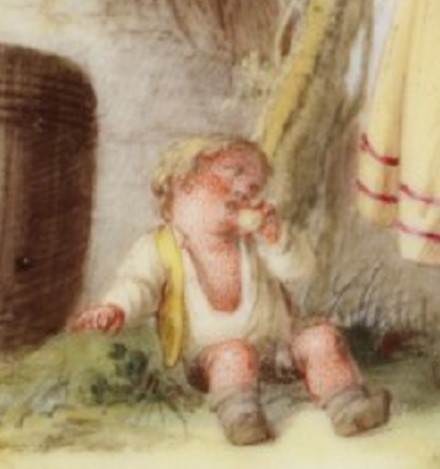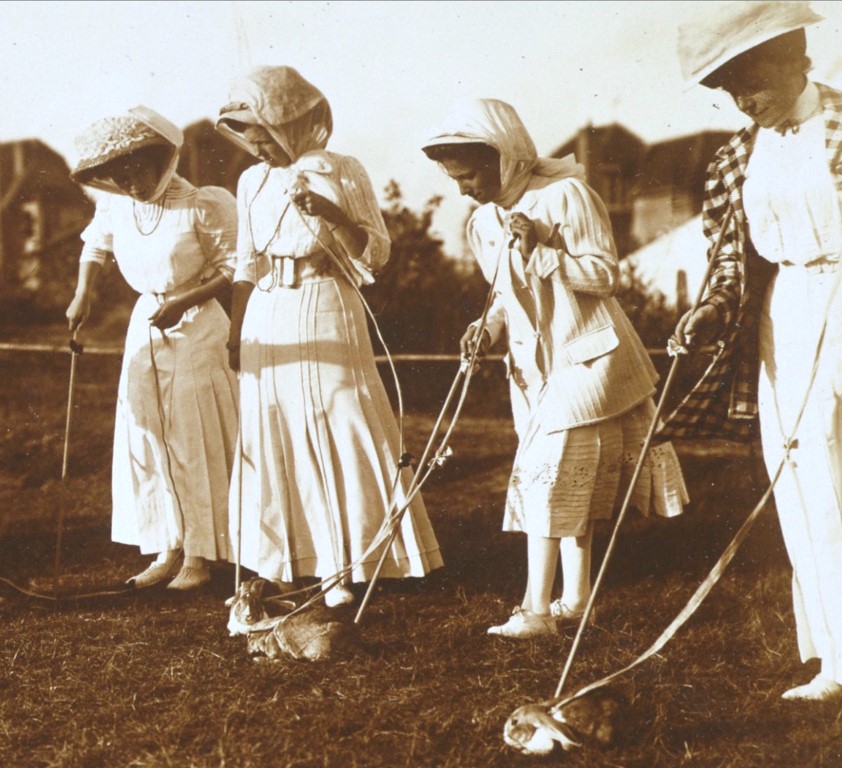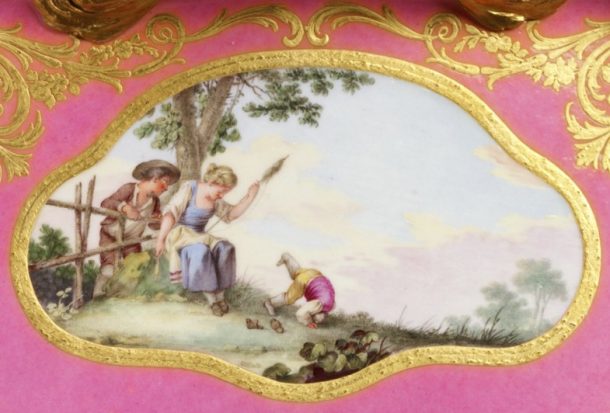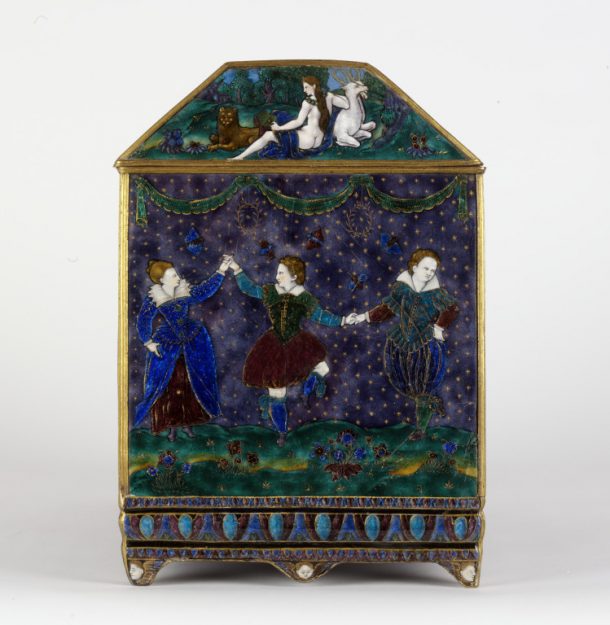Never one to pass up on linking the Europe Galleries to celebrated dates in the calender, this Easter Sunday I thought we should go on a festive egg hunt through the Europe 1600-1800 Galleries.
The rabbits in Andrew Pitcairn-Knowles’ photograph below may be 100 years too late to feature in the galleries, and 100 years too early to be of any help today(!), but I couldn’t resist sharing this image.
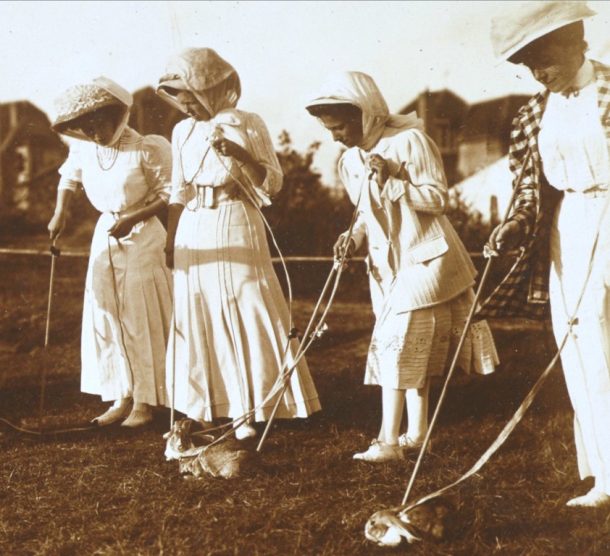
Perhaps they will help encourage us to sniff out some historic eggs in the galleries … although I will be very concerned if any of the eggs we find actually smell!
An Egg as an Egg
Or should that be oeuf? The first egg we find is on this porcelain tray made by the important French porcelain factory Sèvres in 1775. It is part of a cabaret set (or déjeuners) used for serving tea. These sets consisted of complete services on a tray for just one or two people.
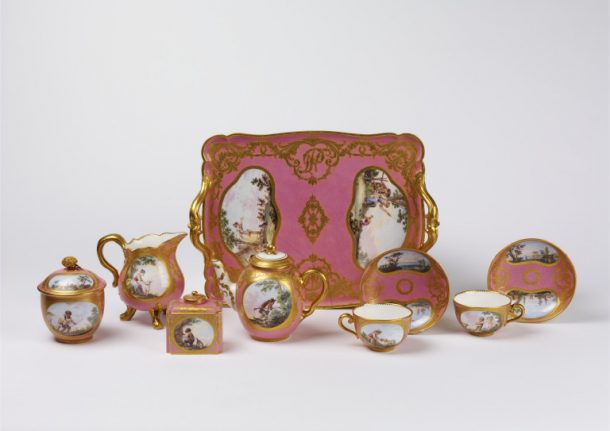
The two large reserves on the tray were painted by Jean Bouchet. They depict idealised/romantic scenes of rural life. On one side a young woman is feeding chickens outside a rustic cottage with a water butt. This is where we find our first egg – in the left-hand of a young child sat on the ground by the water butt.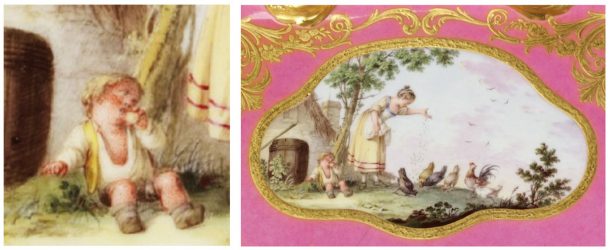
I personally think that he looks rather bored and mardy. Perhaps the woman has given him the egg to occupy his attention and keep him from complaining or crying. It’s not clear whether it is an egg which has been freshly collected from the chickens being fed, or if it was a pre-prepared snack. Either way, hopefully he’ll soon be feeling a bit more lively – like the tumbling child on the other side of the tray.
An Egg as Extravagant Fare
Our next find is not an egg itself but instead a rather magnificent holder for an egg – in other words a rather ‘bling’ egg-cup.
This wonderfully crafted gold egg-cup is a masterpiece of early Neoclassical design and ornament in the Greek taste, as such it will be featuring in the Neoclassicism display. The bowl of the cup is made up of openwork, hung with cast and chased laurel swags. It sits upon a raised openwork foot and comes with a plain gold detachable cover or liner (it is in the position of a liner in the photograph below).
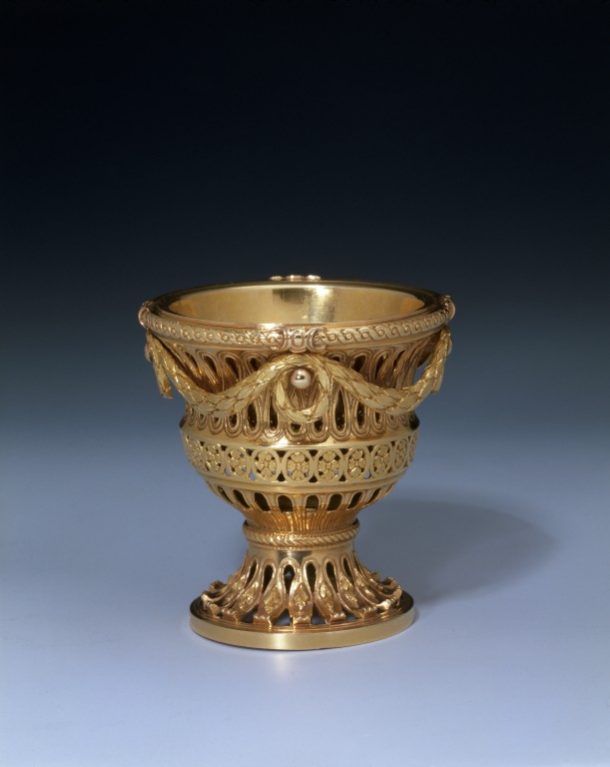
This egg-cup was made by a Parisian goldsmith and is very similar to a sketch of a vase in an album of designs associated with the workshop of the goldsmith Jean Ducrollay. The proportions and scale of the design are such that it could be used just as easily for a large vase as for an egg-cup.
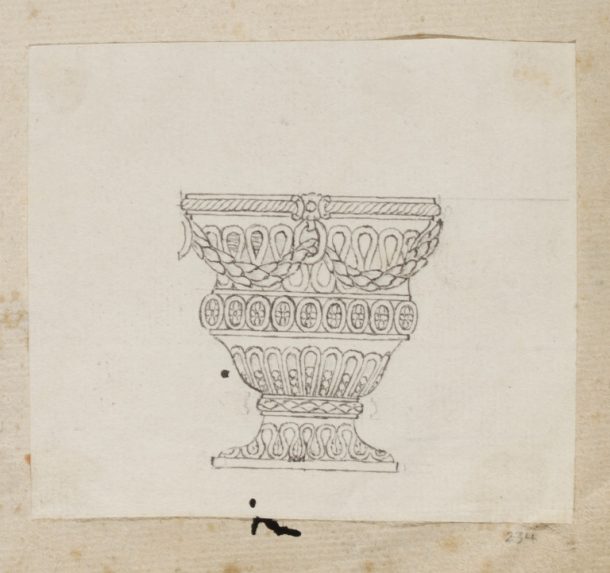
Egg-Shaped
Moving on, we find this oviform (egg-shaped) clock, made from Sèvres porcelain.
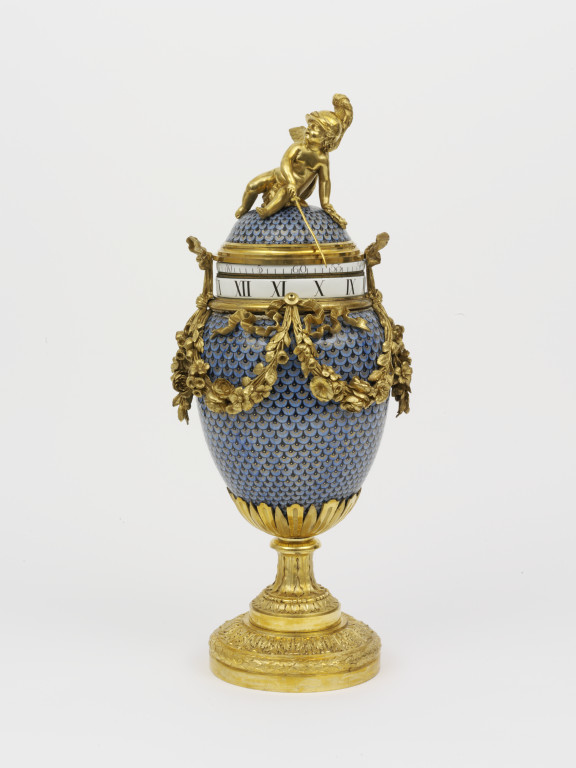
Sèvres porcelain was admired and collected by the royal, noble and wealthy elite throughout Europe, but it also became widely imitated. The porcelain is here mounted with gilt-bronze swags, floral festoons and is presented upon a gold foot as if a vase.
The clock-element operates by the two enamelled dial-bands, turning to indicate the time against a pointer held by the gilt bronze helmeted cupid who forms the finial.
Moulded & Darting Eggs!
Elsewhere in the galleries, eggs can be found in the form of ‘egg and dart’ decoration.
‘Egg and dart’ is the term used for ornamental design devices that consist of an egg-shaped object alternating with another element, most usually shaped like an arrow or dart. It was often found in Ancient Greek architecture but was used in subsequent centuries and was particularly emulated in Neoclassical designs.
Although not going into the Europe Galleries, this sample of wallpaper border provides a clear demonstration of an ‘egg and dart’ pattern.

Eggs Upon Cherubs
This splendid early 17th-century casket was probably commissioned as a very special wedding gift and was originally one of a matching pair. It will feature in The Cabinet display.
The front and sides of the casket are decorated with dancers wearing ballet costumes and holding hands. They are performing a farandole, which was a chain dance that originated in Provence. The hinged pyramidal lid is decorated with images of the Triumph of Bacchus, the Triumph of Ceres and a stag hunt.
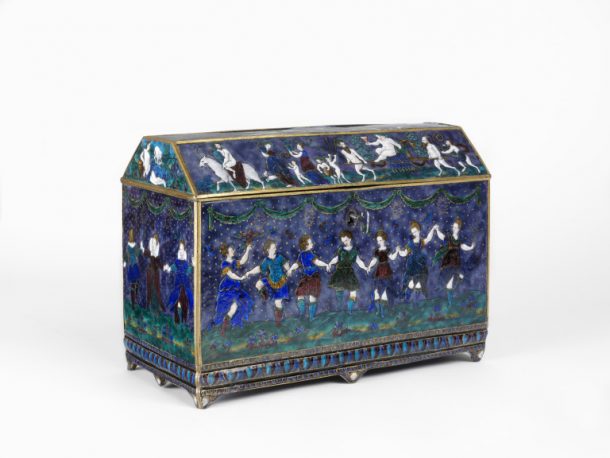
To spot the eggs you need to draw your eye away from the lively dancing and look towards the base of the casket. It stands on eight bevelled feet, painted in enamels, with cherub heads positioned below an egg-and-dart border. (I am going to bypass any puns about egg-heads or egg-on-the face!)
Eggs Under the Table
This, initially rather unassuming, early 17th-century oak table will feature in our display on Dutch Domesticity. It is a standard model of draw-leaf table (trecktafels), used throughout the 17th century.
The rectangular top is plain, and nearly doubles in length when the two leaves are withdrawn. It is supported by turned baluster legs on rounded feet. It is a robust design and was intended for daily practical use, yet was smart enough for a moderately wealthy household.
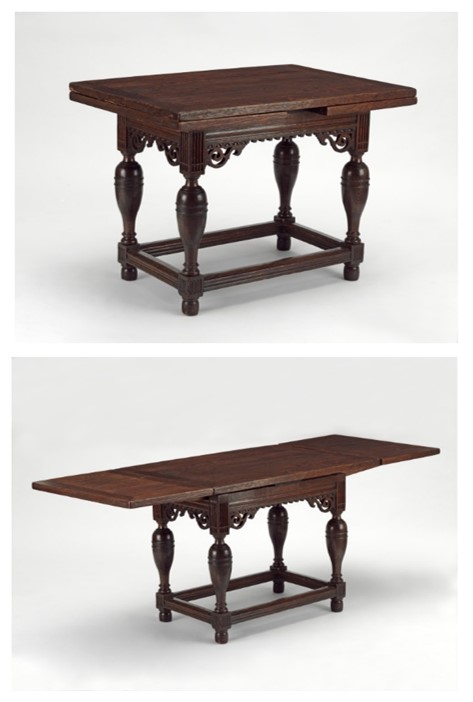
The upper blocks of the legs, and the stretcher blocks (cross pieces which connect the legs to add strength and stability) are fluted. The four rails beneath the table top are moulded and shallow-carved with an egg motif and are accompanied by eight carved and pierced scrolling brackets.
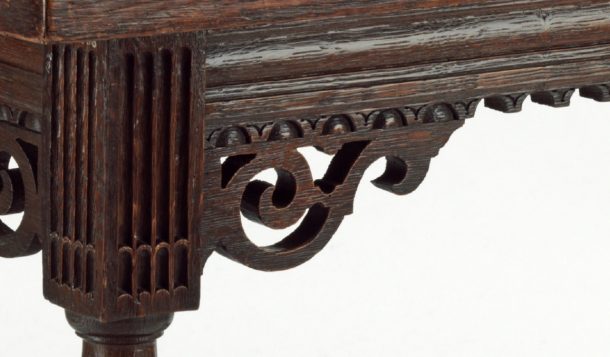
Marie Antoinette’s Eggs
A more up-market and extravagant example of ‘egged furniture’ is this chair, which was part of a suite of furniture made for Marie Antoinette’s Cabinet Particulier in the palace of Saint-Cloud.
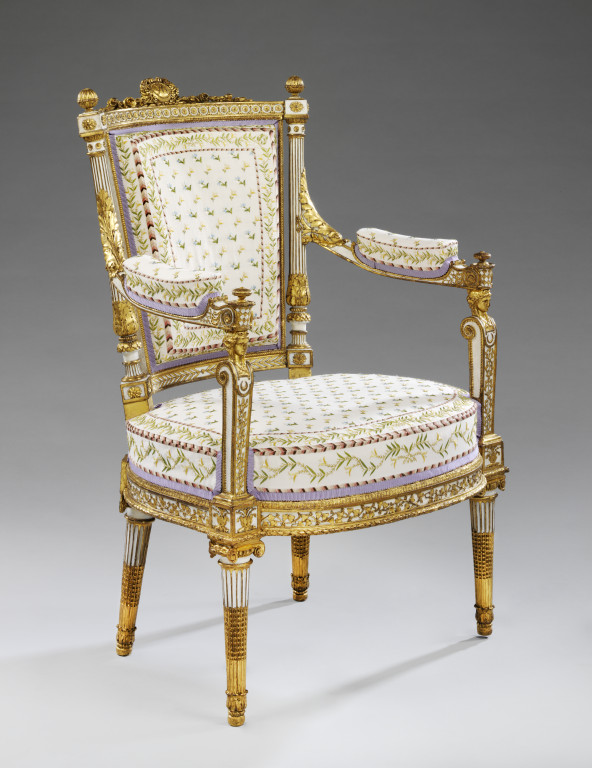
You will probably by now recognise this chair, as it has been one of the highlight conservation projects for the Europe Galleries.
It was made by Jean-Baptiste-Claude Sené in 1788 and was painted and gilded by Louis-François Chatard. Both Sené and Chatard were principle chair makers and gilders to Louis the XVI and Marie Antoinette.
In the chair-back, the main stiles (the outside vertical, framing part of the back) are formed as ornamental columns. Each rises from a ‘plinth’ and continue through a fluted base and a succession of mouldings before ending in a flower-studded collar and egg-and-dart ovolo (curved convex moulding) capital.
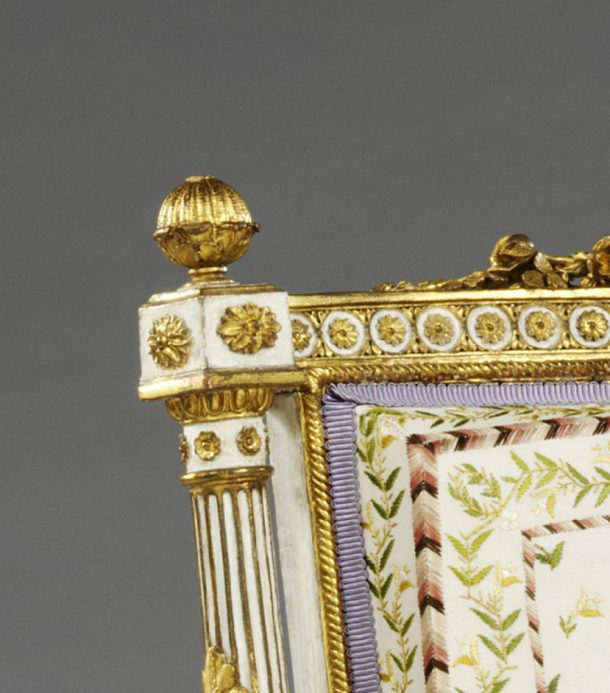
Egg as Material
Egg and dart moulding can also be found in one of the spectacular period rooms which will be in the galleries – this little closet, made for the 16-year-old Anne-Marie Louise Thomas de Domangeville, around the time of her marriage to Megret de Sérilly in 1778.
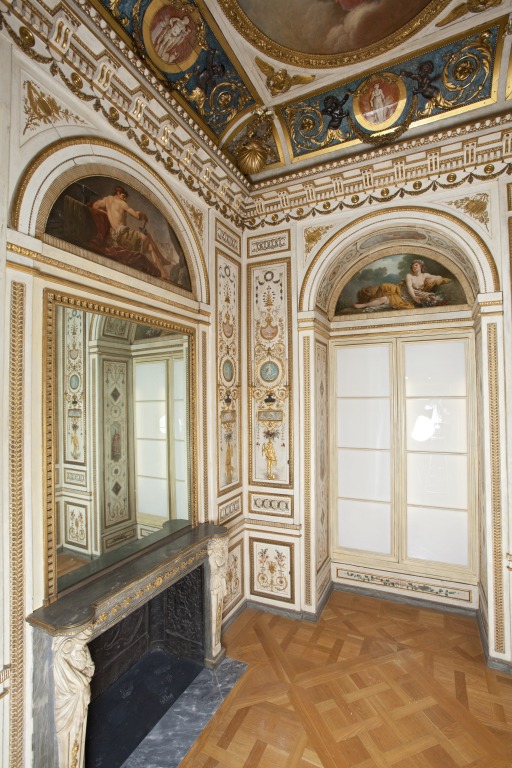
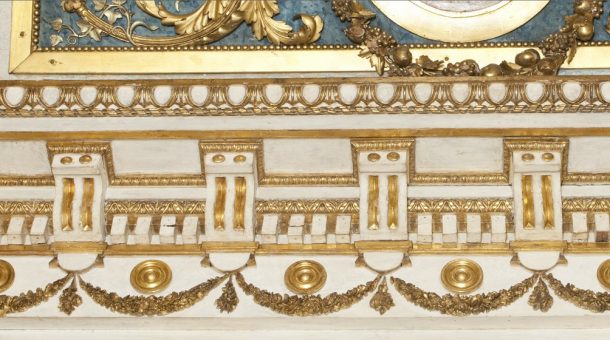
However, there is another ‘egg-element’ to the room …
It isn’t found in the painted and gilded with arabesques, roundels, figures, foliage and flowers, illustrating the Elements and the Seasons, on the carved oak panelling.
It also isn’t in the semi-circular overdoors or overmantel, painted with gods and goddesses.
Nor the painted and gilded figures on the ceiling, or in the painting of Jupiter.
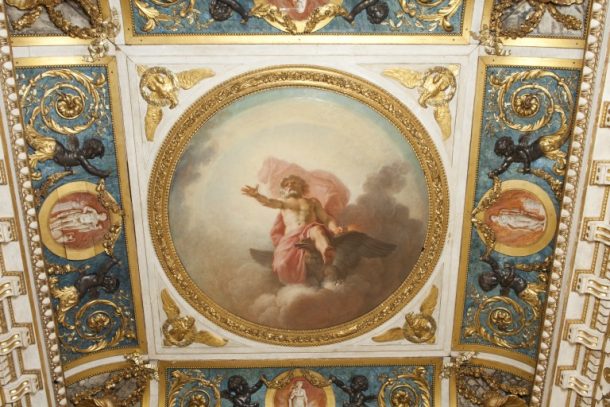
Okay, so you might well think that I am pushing it a bit here, but our last Easter egg find is one that isn’t all that visible.
The main panels of the room may be decorated with gilded carving and oil paintings, but the other ‘plain’ flat surfaces are painted in an … … egg-tempera medium.
Tempera is a painting medium, consisting of colour pigment mixed with a water-soluble medium that acts as a binder or emulsion. This binder would most often be egg yolk or a similar glutinous material. Water is added to thin the paint to the consistency desired before applying it the surface.
Egg-tempura dries quickly and would usually be applied in thin, semi-opaque or transparent layers. It is one of the oldest painting mediums but the rich, deep and slightly glossy colors it is capable of producing helped it to enjoy renewed popularity during the 18th century.
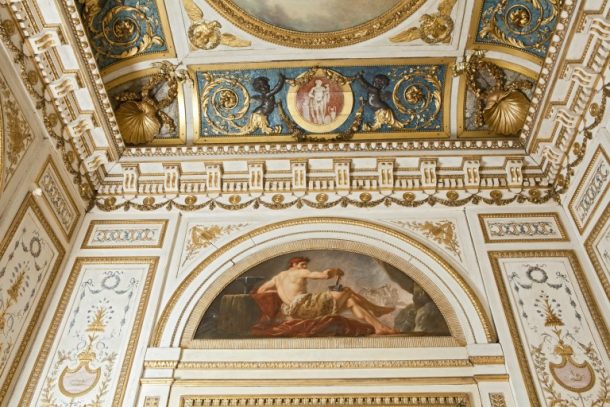
I think that’s quite enough about eggs for this weekend, so I’m going to call an end to today’s hunt. I hope you all enjoy the Easter weekend.
